By Daniela Maoate-Cox
Hands in black pull the skin tight as fine bone points pierce it with ink.
A breeze rustles through the thatched roof and a rooster’s crow floats over the riddims of Bob Marley and the tapping of tatau tools.
"Bob Marley, Salmonella dub or Tiki, those three. It’s just got a good vibe to it,” says the man under the hammer, Thomas Tarurongo Wynne.
“Bob and tatau were made for each other,” tatau artist Croc chips in.
Croc moves the ‘ui tatau, a comb-like chisel, up the back of Thomas’ right leg, matching the markings on his left.
It’s a sensitive spot and the full work, which draws upon traditional Cook Island designs, will require a few more sessions to finish.
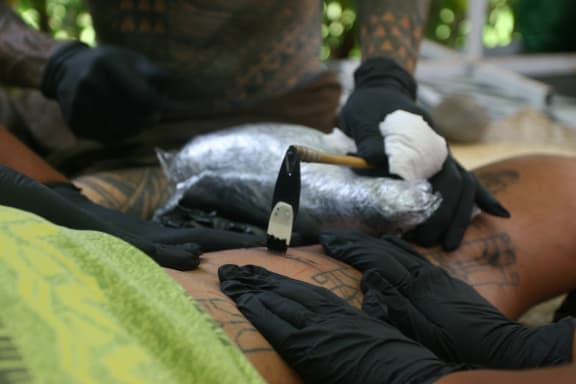

At least two people are needed to stretch the skin tight so the artist can tap the ink patterns into place. Photo RNZ/Daniela Maoate-Cox
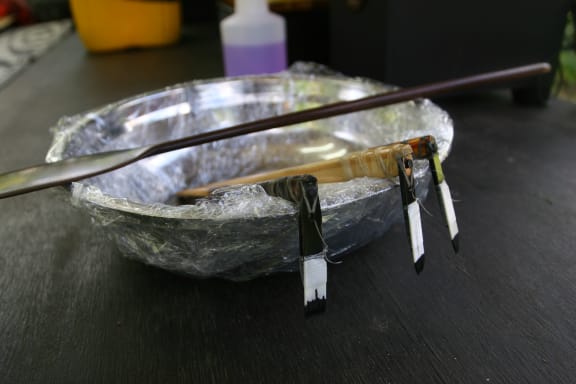

Tatau artists Croc's tools are made and maintained by him using wood, fishing wire, and the tusk of a pig for the head. Photo RNZ/Daniela Maoate-Cox
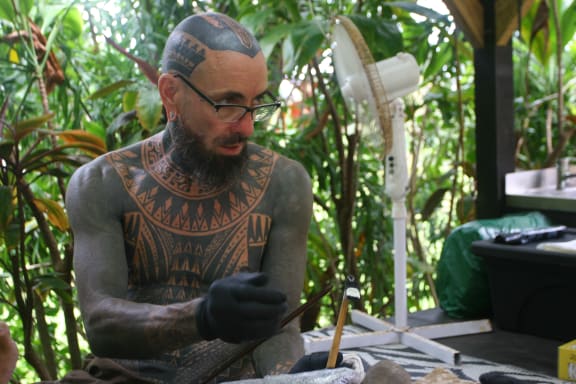

"It’s always stood in my mind and in many cultural ways as something of its own and seen as sacred, something of honour and of mana." Croc shares his thoughts on tatau. Photo RNZ/Daniela Maoate-Cox
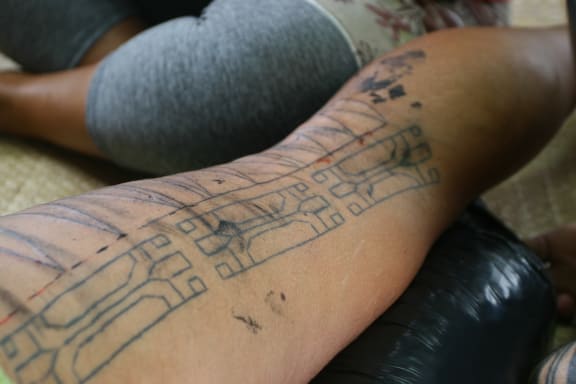

Each tatau is marked out with pen for approval by whoever is receiving it before work begins. RNZ/Daniela Maoate-Cox
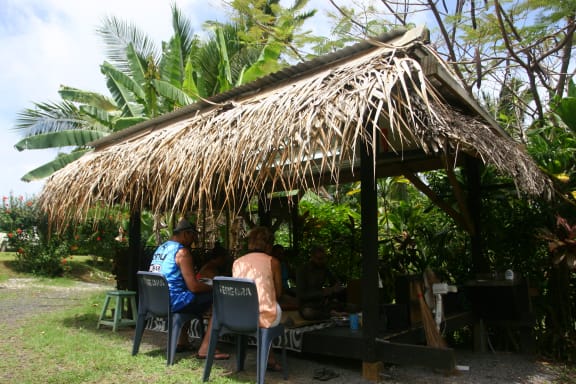

Croc appreciates people taking the time to learn and watch ta tatau. Here some family members of one of the stretchers watch Thomas Tarurongo Wynne receive tatau. Photo RNZ/Daniela Maoate-Cox

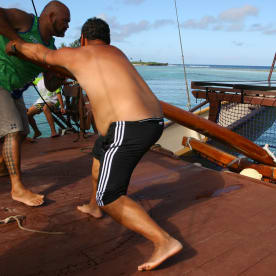
Vaka voyagers and the vaka themselves were instrumental in spreading tatau patterns throughout the Pacific. Thomas Tarurongo Wynne (left) helps steer the vaka out of Avana passage. Photo RNZ/Daniela Maoate-Cox
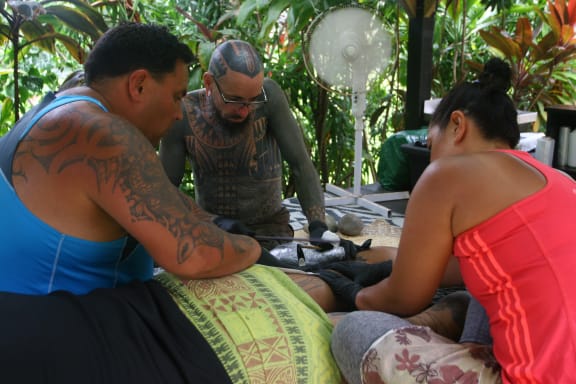

Croc prefers to work outside where it's cooler and built the hut himself. Photo RNZ/Daniela Maoate-Cox
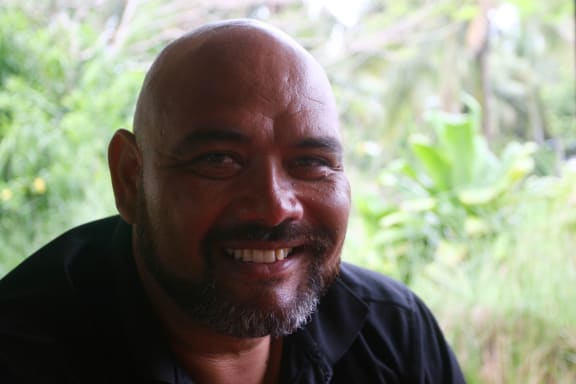

"The thing to understand with colonisation is that it's not something that happened, it's something that is happening." Thomas Tarurongo Wynne. Photo RNZ/Daniela Maoate-Cox
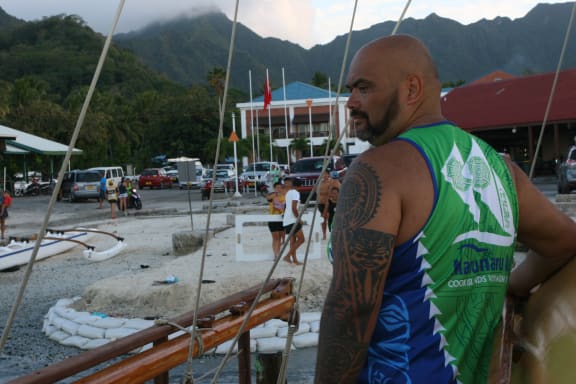

Thomas Wynne is part of the Marumaru Atua voyagers. Here he helps guide the vaka into Avarua Harbour in Rarotonga. Photo RNZ/Daniela Maoate-Cox
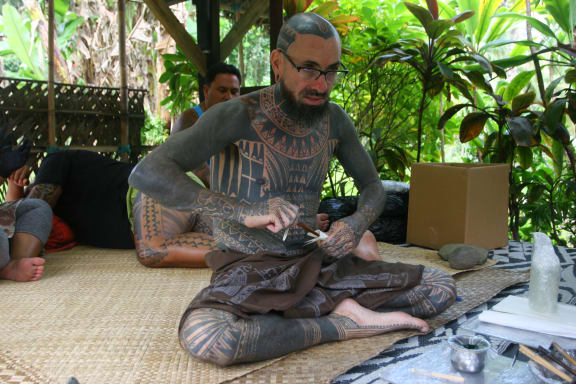

Croc sets up for Thomas Tarurongo Wynne to receive his tatau. Photo RNZ/Daniela Maoate-Cox
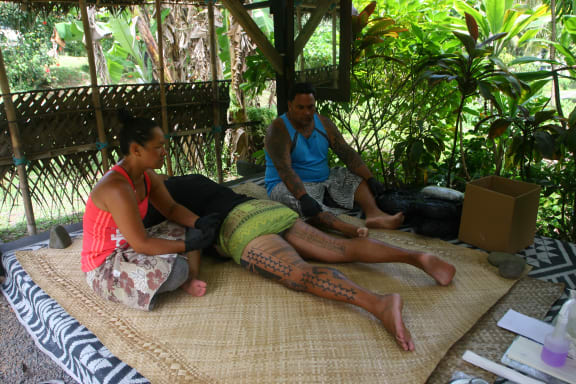

Thomas Tarurongo Wynne and the two stretchers relax before Thomas receives his tatau. RNZ/Daniela Maoate-Cox
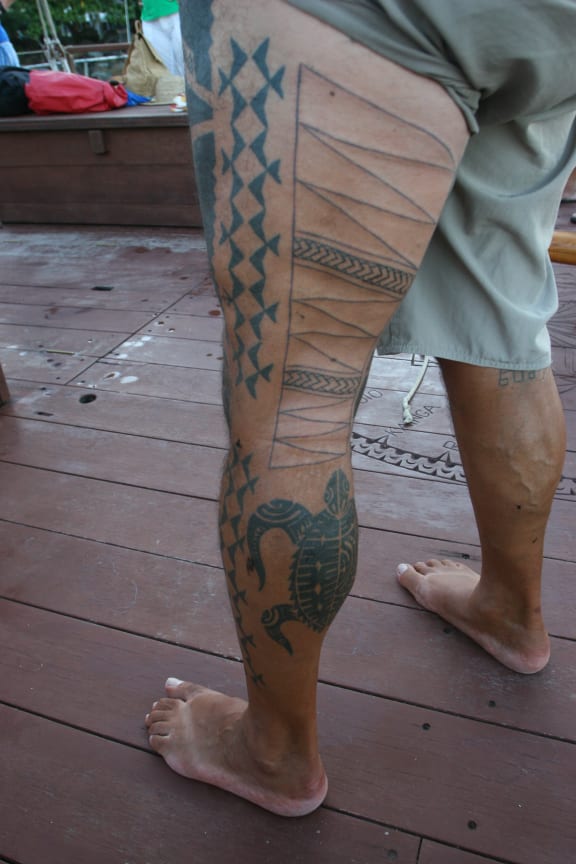

Thomas Tarurongo Wynne shows his tatau on a vaka voyage just a couple of hours after he has had the outline on his left leg completed. RNZ/Daniela Maoate-Cox
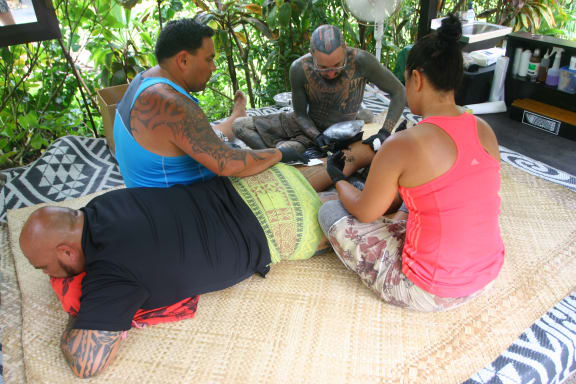

Thomas Tarurongo Wynne says his tatau design has been a work in progress for about three years. Photo RNZ/Daniela Maoate-Cox
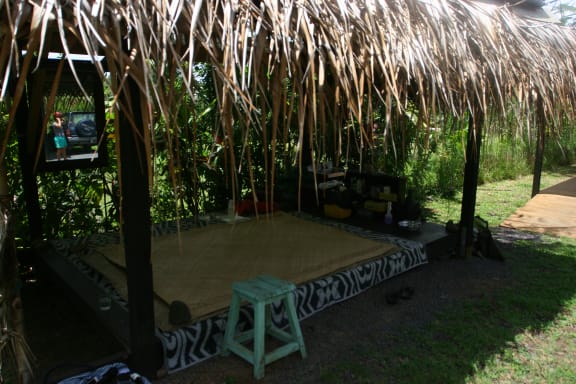

The outdoor studio where Croc does his work. Roosters, goats, and Bob Marley provide a unique background to his work. Photo RNZ/Daniela Maoate-Cox
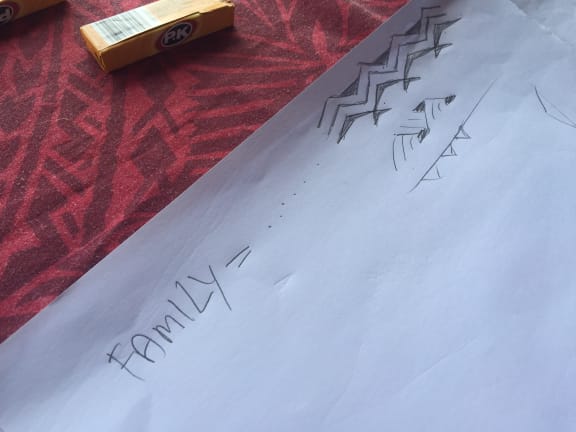

An early concept of my tatau drawn by Croc. Photo RNZ/Daniela Maoate-Cox
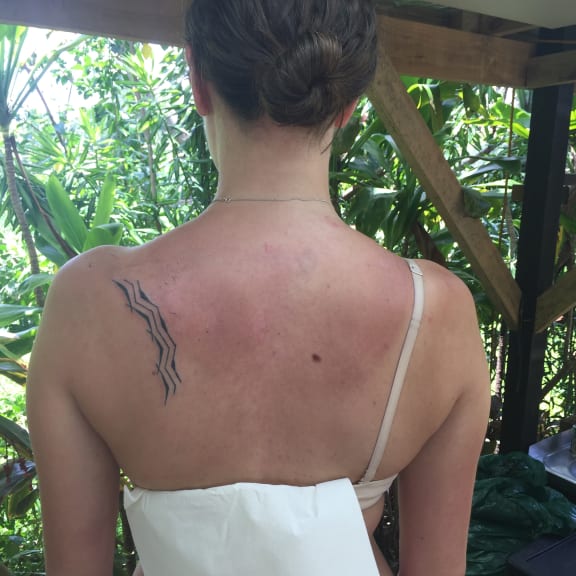

My finished tatau. Three manu tai or sea birds, with their wings linked, flying over the moana or ocean, towards the enua or land. A symbol of unity, support and guidance.
Photo/Croc Tatau
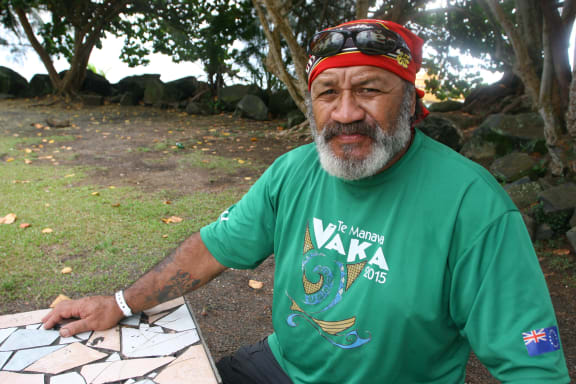

Tetini Pekepo was shut down by family when he first tried to set up a tatau studio in the Cook Islands. Photo RNZ/Daniela Maoate-Cox
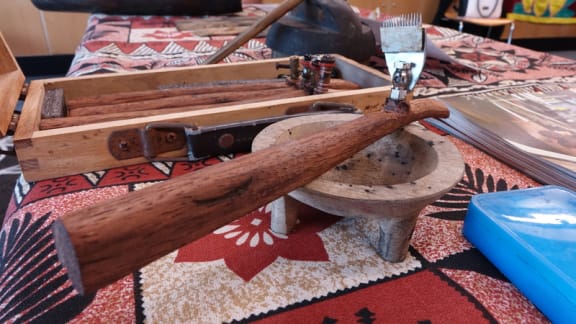

"Tatau represents a time in someone's life" - master tatau artist Tetini Pekepo. Photo RNZ/Koroi Hawkins
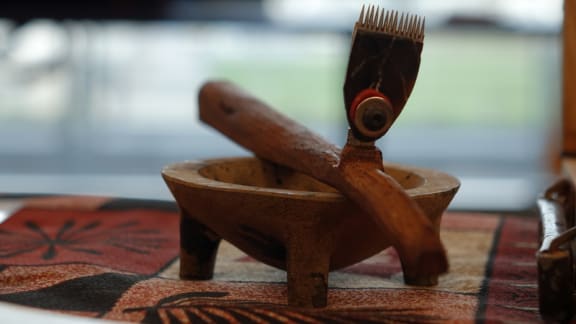

Tatau was once widespread throughout the Cook Islands until the arrival of the missionaries who discouraged the practice. Pictured here are Tetini Pekepo's tools. Photo RNZ/Koroi Hawkins
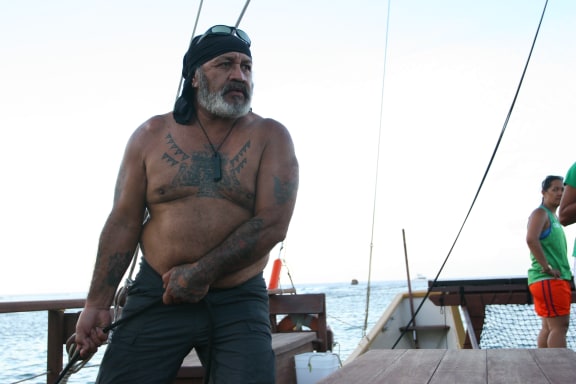

These days Tetini Pekepo is more interested in sailing than practicing tatau. Here he is captaining the Marumaru Atua vaka. Photo RNZ/Daniela Maoate-Cox
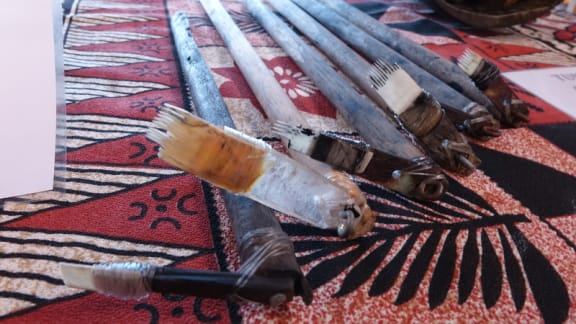

Traditional tatau tools used by ta tatau artist Tetini Pekepo. Photo RNZ/Koroi Hawkins
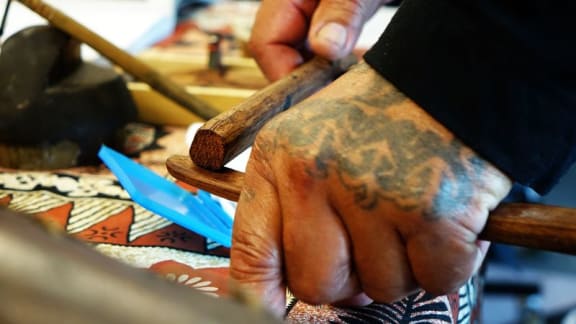

Tetini Pekepo lays out his tools at New Zealand's Te Papa Tongarewa museum in Wellington to show the public how he creates his art. Photo RNZ/Koroi Hawkins
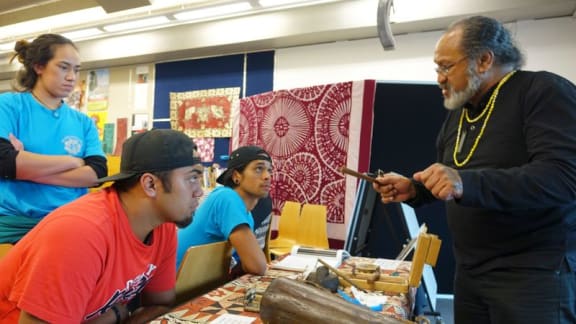

Some eager young men quiz Tetini Pekepo about tatau at Te Papa Tongarewa in Wellington, New Zealand. Photo RNZ/Koroi Hawkins
While there are many who believe tatau belongs to Samoa and is not a part of Cook Islands culture, Thomas disagrees.
Through his job as head of guidance at a local Rarotongan high school, he discovered that a strong sense of identity is created through knowing about history.
And through exploring the Cook Islands’ history of tatau, he says he found that it had been eradicated by the missionaries who deemed it to be a pagan practice.
“Interestingly people here say 'it’s not in our culture, we don’t tattoo', or 'we didn’t tattoo', or 'if you want to receive a tattoo then that’s not being Maori'.
"Which I find interesting because our very close cousins in New Zealand, Aotearoa, are tattooed.”
The renaissance of Cook Islands tatau is linked back to two events in the early 1990s. One is the teaching of the technique by a Samoan tufuga ta tatau, or master tattooist, Sua Sulu’ape Paulo II who felt tatau should be given back to other Pacific nations.
The other is the 1992 Pacific Arts Festival held in the Cook Islands.
“That really was our awakening around the fact that yes, we can receive tattoo”, Thomas says.
“Now it’s just making the connection to culturally and ancestrally what’s ours, which is tatau. It’s not the machine of course, it’s using traditional tools and traditional methods to receive the tattoo.”
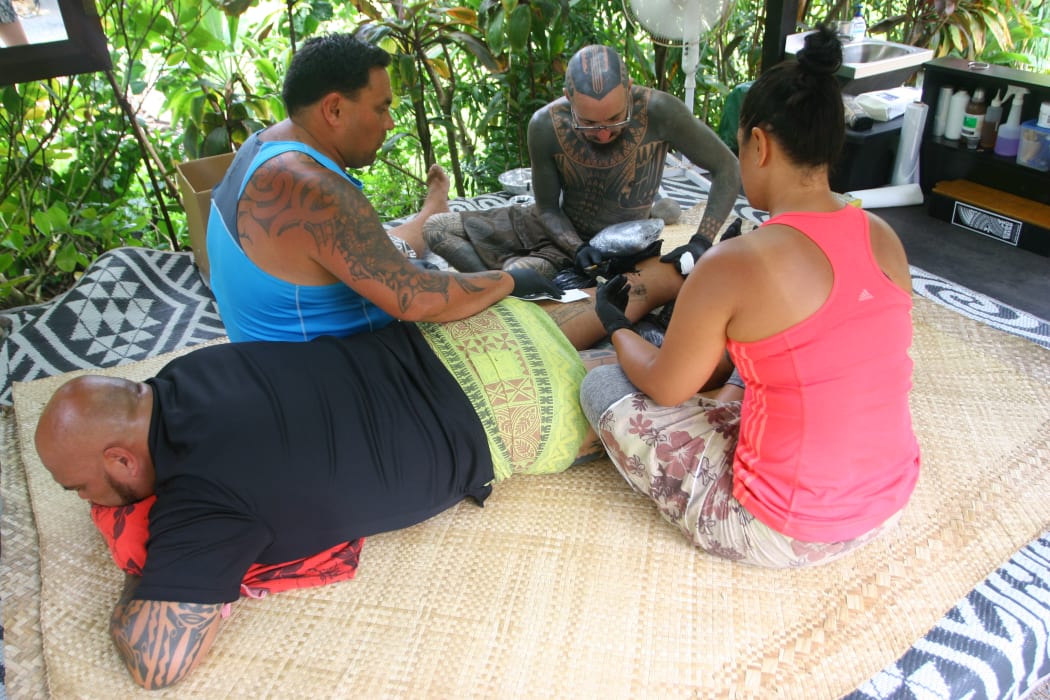
"The idea starts with a question and the question is, what is a Cook Islands Tattoo?" Thomas Tarurongo Wynne receives tatau.
Photo: RNZ/Daniela Maoate-Cox
Croc is one of those practicing the traditional method. He’s an Englishman who learned the craft from Moko Ink’s, Inia Taylor, in New Zealand, who in turn learned from Sulu’ape.
“I see it in Europe a lot, tattoo is in its form which is awesome,” he says. “But it’s also out of control, you’ve got young people running around there that have just their hands, or their neck or face tattooed. Sounds odd coming from me but I find it shocking”.
So Croc is practicing his skill in the Cook Islands where the revival is in its early steps and he can help restore what was lost.
















































